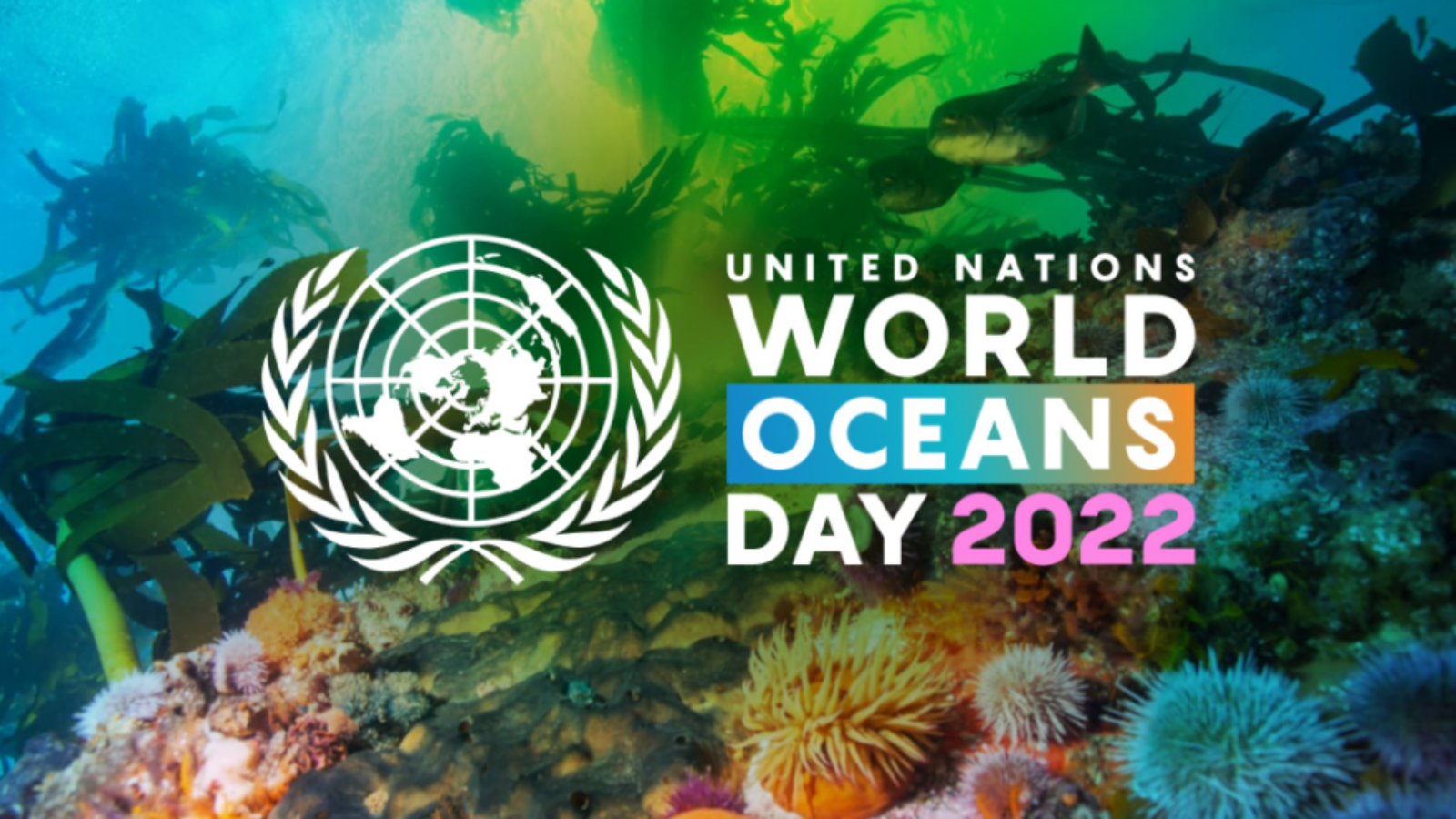World Oceans Day is an international event of education and action which takes place around the globe every year on June 8th. Originally proposed at the Earth Summit – UN Conference on Environment and Development (UNCED) in 1992, it aims to bring awareness to the implementation of the worldwide sustainable development goals, fosters public interest in the protection of the Earth’s ocean, and the sustainable management of its resources. It was officially recognized by the United Nations in 2008 and has been celebrated all over the world. The theme for this year’s World Oceans Day 2022 is “Revitalization: Collective Action for the Ocean”.
Our Oceans are Facing Problems
There are many reasons we should work hard to protect our oceans. According to Time Magazine, “Human beings owe their life to the sea. 4 in 10 humans rely on the ocean for food. Marine life produces 70% of our oxygen; 90% of global goods travel via shipping lanes. We turn to the sea for solace—ocean-based tourism in the U.S. alone is worth $124 billion a year—and medical advancement. An enzyme used for COVID-19 testing was originally sourced from bacteria found in the ocean’s hydro-thermal vents.”
The ocean also acts as a giant air conditioner for the planet. Over the past 100 years, the ocean has absorbed 93% of the heat that is trapped in the atmosphere by greenhouse-gas emissions. “If all that heat hadn’t been taken up by the ocean, we’d all be living in Death Valley conditions by now,” says marine-conservation biologist Callum Roberts at the U.K.’s University of York.
Nevertheless, our oceans are facing a multitude of problems. Plastic and waste pollution, fertilizer and pesticide pollution, overfishing, ocean acidification, coral bleaching, and sea temperature rise are just some of the issues that harm humans and the natural systems we rely on.
Trash pollution that ends up in our oceans, especially in the form of plastic, is a particularly pressing issue for brands, manufacturers, and producers of consumer goods. According to National Geographic,
- Half of all the plastics ever manufactured have been made in the last 15 years. Production has increased exponentially, from 2.3 million tons in 1950 to 448 million tons by 2015.
- Every year, about 8 million tons of plastic waste ends up in the oceans from coastal nations. That’s the equivalent of putting 5 garbage bags full of trash on every foot of coastline around the world every year.
- Globally, 40% of all the plastic produced is packaging.
- Plastics often contain additives making them stronger, more flexible, and durable. But many of these additives can extend the life of products if they become litter, with some estimates ranging to at least 400 years to break down.
Collective Action for the Ocean
The theme of this year’s World Oceans Day is Revitalization: Collective Action for the Ocean. Important sustainability goals are usually met when many different stakeholders across a company can come together and leverage their skills effectively. Top industry leaders step back and consider product and package sustainability using holistic approaches. The same type of holistic thinking and collective action between individuals, governments, institutions, and businesses is key to revitalizing the health of our oceans.
Despite all the problems we face, there are more and more people across the world working hard to create the right solutions. Companies are working to find more eco-friendly alternatives to plastic packaging, new fishing laws against exploitation are being introduced, and some large scale actions have been taken to slow down climate change.
There are some things you can do to be part of the solution to plastic pollution:
- Clean a beach or a river
- Support companies that have meaningful sustainability initiatives
- Avoid single-use and disposable packaging
- Buy products that are refillable or reusable
- Find out which items are recyclable in your area and which aren’t
- Try a Zero-Waste lifestyle
World Oceans Day UN Event!
United Nations World Oceans Day 2022 is the first-ever hybrid celebration of the annual event. It features both in-person programming hosted at UN HQ in NYC and virtual components for global public accessibility.
We will be hearing from thought-leaders, celebrities, institutional partners, community voices, entrepreneurs, and cross-industry experts as they delve into key topics and work to both inspire and ignite collaborative change.
The event is on Wednesday, June 8th from 10 AM- 1:30 PM EDT. It is open to everyone.
Sources
“A Tidal Wave of Plastic.” UNDP, https://feature.undp.org/plastic-tidal-wave/.
Baker, Aryn. “Why We Need to Focus on Saving the Oceans This Year.” Time, Time, 9 July 2020, https://time.com/5863821/saving-the-oceans/.
Parker, Laura. “Plastic Pollution Facts and Information.” Environment, National Geographic, 3 May 2021, https://www.nationalgeographic.com/environment/article/plastic-pollution#:~:text=Every%20year%2C%20about%208%20million,of%20coastline%20around%20the%20world.
United Nations World Oceans Day, 24 May 2022, https://unworldoceansday.org/.
“UN World Oceans Day 2022.” United Nations World Oceans Day, 4 June 2022, https://unworldoceansday.org/un-world-oceans-day-2022/.


Add a Comment
You must be logged in to post a comment